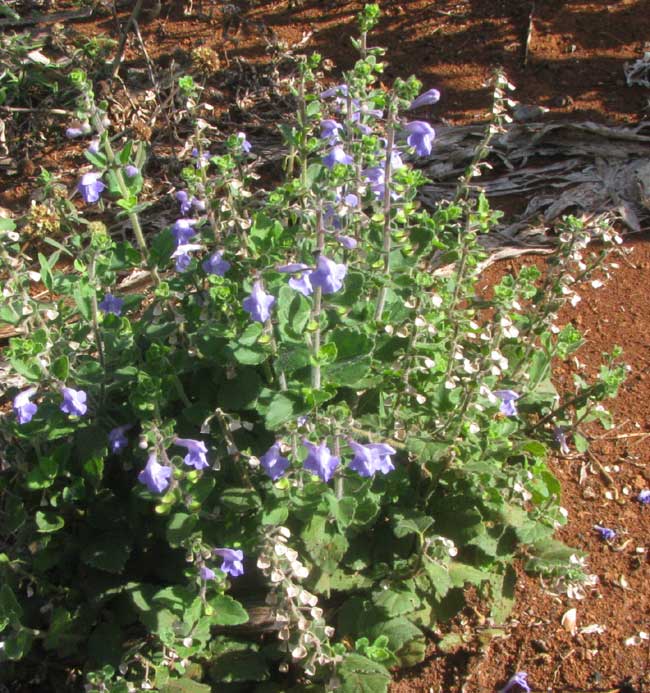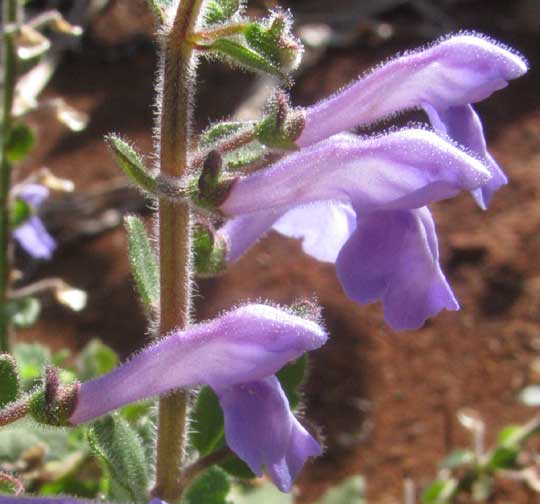Excerpts from Jim Conrad's
Naturalist Newsletter

from the January 29, 2012 Newsletter issued from Hacienda Chichen Resort beside Chichén Itzá Ruins; limestone bedrock; elevation ~39m (~128ft), N20.675°, W88.569°; central Yucatán state, MÉXICO
GAUMER'S SKULLCAP
The Mayas' cornfields, or milpas, are standing fallow now, their widely spaced corn plants bleached pale by rains, the corn ears long since harvested by hand and carried away in bags. Most corn plants now have dried-up morning-glory vines twining up their stalks, their dark, dry seedpods about to open and release seeds. The ground is thick with knee-high weeds, basically the same few species occurring again and again, but in one spot there's something different, shown above.
Those blue, bilaterally symmetrical blossoms are typical of the Mint Family. The plant's two-to-a-node (opposite), oval leaves, like those of a Spearmint, confirm the plant as a mint. You can see the flowers, unusually densely coated with gland-tipped hairs, below:

In the last picture, locate the greenish, two-lipped, bowl-like calyx at the bottom of each blossom. Notice that on the back side of each calyx there arise upward projecting, duckbill-like protuberances unlike anything seen in the vast majority of other flower types. These "crests" are distinctive for the Mint Family genus Scutellaria. The Mint Family contains so many look-alike genera that often it's hard to distinguish them, but if you see calyxes with such projections, you have a Scutellaria. In English Scutellarias are known as skullcaps.
Finding only two Scutellarias listed for the Yucatán, it wasn't hard to figure out that this was SCUTELLARIA GAUMERI. The species isn't graced with any generally accepted English name, but I think of it as Gaumeri's Skullcap.
It's always a treat to find any organism bearing Gaumer's name, and in the Yucatán there are many. Here's what I wrote back in 2006 when we found the cactus Mammillaria gaumeri near Río Lagartos on the Yucatán's northern coast:
"George Franklin Gaumer (1850-1929) was a US citizen residing in the Yucatan from 1884 to his death, and he collected a remarkable number of rare and endemic species, which he sent to specialists for identification or, if they were unknown to science, for naming. Many of those specialists named the undescribed plants after their discoverer, Gaumer. There's Acacia gaumeri, Caesalpinia gaumeri, Thevetia gaumeri, Vitex gaumeri, and many more. What a heck of a lot of fun that guy must have had as he explored a land basically unknown to biologists!"